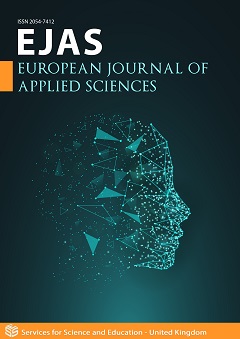Unitary Theory of Quantum Mechanics and General Relativity
DOI:
https://doi.org/10.14738/aivp.94.10620Abstract
Essentially, in this paper we propose a new description of the quantum dynamics by two relativistic propagation wave packets, in the two conjugated spaces, of the coordinates and of the momentum. Compared to the Schrödinger-Dirac equation, which describes a free particle by a wave function continuously expanding in time, considered as the amplitude of a probabilistic distribution of this particle, the new equations describe a free particle as an invariant distribution of matter propagating in the two spaces, as it should be. Matter quantization arises from the equality of the integral of the matter density with the mass describing the dynamics of this density in the phases of the wave packets. In this description, the classical Lagrange and Hamilton equations are obtained as the group velocities of the two wave packets in the coordinate and momentum spaces. When to the relativistic Lagrangian we add terms with a vector potential conjugated to coordinates, as in the Aharonov-Bohm effect, and a scalar potential conjugated to time, we obtain the Lorentz force and the Maxwell equations as characteristics of the quantum dynamics. In this framework, the conventional Schrödinger-Dirac equations of a quantum particle in an electromagnetic field obtain additional terms explicitly depending on velocity, as is expected in the framework of relativistic theory. Such a particle wave function takes the form of a rapidly varying wave, with the frequency corresponding to the rest energy, modulated by the electric potential where this particle is confined, the vector potential of the electromagnetic radiation, and the gravitational potential. In the gravitational field of a black hole, the velocity of a quantum particle is directed to the Schwarzschild boundary from the outside and from the inside, without passing this boundary. When the very strong gravitational field of a large agglomeration of matter has spherical symmetry with a radius smaller than the Schwarzschild radius, the quantum particles in the central region are crushed up to quasi-uniform distributions of matter, exploding with velocities much larger than the light velocity, towards the Schwarzschild boundary, but decelerating in the gravitational field and reaching this boundary only in an infinite time. The matter of a black hole has the tendency to concentrate around the Schwarzschild boundary, with a radius proportional to its mass. In this framework, we believe that our universe is a huge black hole, with the explosion of its central matter as the Big Bang-inflation process, and an increasing radius on account of an absorption of matter from the Total Universe, where our universe has been formed. In a gravitational wave, the time-space interval in the first-order approximation is the product of a gravitational invariant including the amplitude tensor, and a coordinate invariant including the polarization vector. The gravitational invariant describes a rotation of the metric tensor around the direction of the propagation of this wave, with spin 2, as a gravitational quantum called graviton. The coordinate invariant describes a matter rotation with the spins ½ for Fermions, and 1 for Bosons. From the new dynamic equations, for a free particle in the coordinate and momentum spaces, we reobtain the two basic equations of the quantum field theory, but with a change of sign, and an additional term depending on momentum, to the rest mass as the eigenvalue of these equations. However, when these eigenvalues are eliminated, the wave function takes the form of a wave packet of spinors of the same form as in the conventional quantum field theory, with a normalization volume as the integral of the ratio of the energy to the rest energy, over the momentum domain which gives finite dimensions to the quantum particle, as a finite distribution of matter in the coordinate space.
Downloads
Published
How to Cite
Issue
Section
License
Copyright (c) 2021 Eliade Stefanescu

This work is licensed under a Creative Commons Attribution 4.0 International License.






